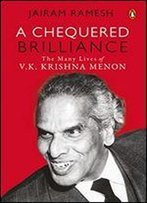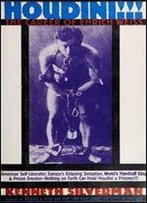
The Killing Of Karen Silkwood: The Story Behind The Kerr-mcgee Plutonium Case
by Richard Rashke /
2016 / English / PDF
230.6 MB Download
Karen Silkwood, an employee of the Kerr-McGee plutonium
processing plant, was killed in a car crash on her way to deliver
important documents to a newspaper reporter in 1974. Silkwood was
a union activist concerned about health and safety issues at the
plant, and her death at age 28 was considered by many to be
highly suspicious. Was it Kerr-McGee's revenge on a troublesome
whistle-blower? Or was it part of a much larger conspiracy
reaching from the Atomic Energy Commission to the FBI and the
CIA?
Karen Silkwood, an employee of the Kerr-McGee plutonium
processing plant, was killed in a car crash on her way to deliver
important documents to a newspaper reporter in 1974. Silkwood was
a union activist concerned about health and safety issues at the
plant, and her death at age 28 was considered by many to be
highly suspicious. Was it Kerr-McGee's revenge on a troublesome
whistle-blower? Or was it part of a much larger conspiracy
reaching from the Atomic Energy Commission to the FBI and the
CIA?
Richard Rashke leads us through the myriad of charges and
countercharges, theories and facts, and reaches conclusions based
solely on the evidence in hand. Originally published in 1981, his
book offers a vivid, edgy picture of the tensions that racked
this country in the 1970s. However, the volume is not only an
important historical document. Complex, fascinating characters
populate this compelling insider's view of the nuclear industry.
The issues it explores—whistle-blowers, worker safety, the
environment, and nuclear vulnerability—have not lost relevance
today, 26 years after Silkwood's white Honda Civic was found
trapped in a concrete culvert near Oklahoma City. For this second
edition, Rashke has added a preface and three short chapters that
explore what has been learned about Silkwood since the book's
original publication, explain what happened to the various actors
in the drama, and discuss the long-term effects of the events
around Silkwood's death.
Richard Rashke leads us through the myriad of charges and
countercharges, theories and facts, and reaches conclusions based
solely on the evidence in hand. Originally published in 1981, his
book offers a vivid, edgy picture of the tensions that racked
this country in the 1970s. However, the volume is not only an
important historical document. Complex, fascinating characters
populate this compelling insider's view of the nuclear industry.
The issues it explores—whistle-blowers, worker safety, the
environment, and nuclear vulnerability—have not lost relevance
today, 26 years after Silkwood's white Honda Civic was found
trapped in a concrete culvert near Oklahoma City. For this second
edition, Rashke has added a preface and three short chapters that
explore what has been learned about Silkwood since the book's
original publication, explain what happened to the various actors
in the drama, and discuss the long-term effects of the events
around Silkwood's death.











